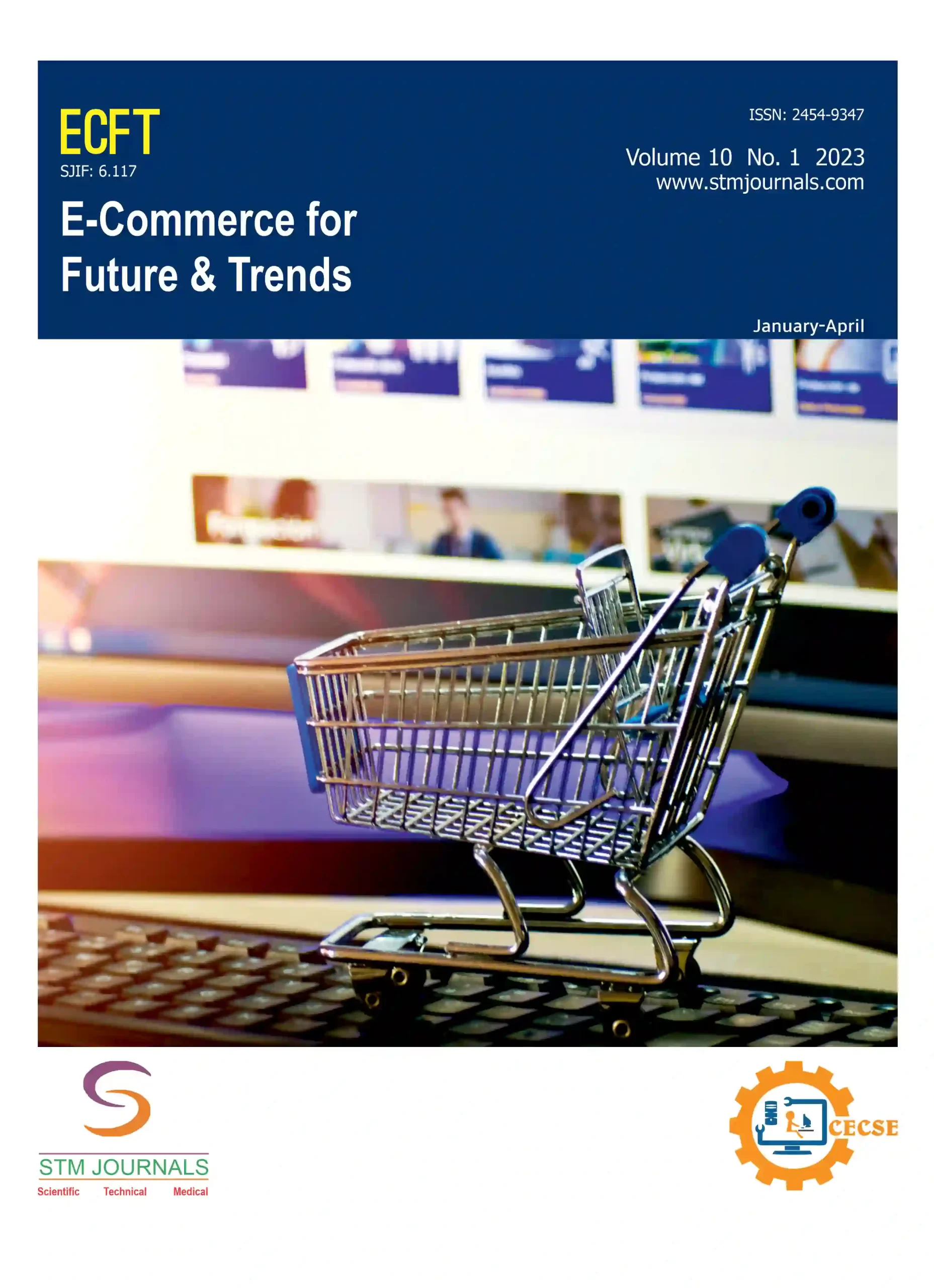
Ajay Kumar

Harshdev Verma
- Research scholar Department of Commerce, Deen Dayal Upadhyaya Gorakhpur University, Gorakhpur Uttar Pradesh India
- Assistant Professor Department of Commerce, Deen Dayal Upadhyaya Gorakhpur University, Gorakhpur Uttar Pradesh India
Abstract
This study examines the crucial connection between rural consumers’ online buying habits and internet availability and infrastructure in those places. The study finds that increased access to the internet has a beneficial impact on rural areas’ adoption of e-commerce. In these areas, trust and security concerns were found to be important determinants of online shopping behaviour, in addition to demographic differences. The findings highlight the significance of overcoming internet-related difficulties to promote economic growth and extend online retail prospects in rural areas, with implications for governments, e-commerce platforms, and firms targeting these markets.
Keywords: Rural infrastructure, e-commerce, digital marketing, internet accessibility impact, and online buying habit.
[This article belongs to E-Commerce for Future & Trends(ecft)]
References
- Banerjee,N., Dutta, A & Dasgupta, T(2010). A Study on Customers Attitude Towards Online Shopping – An Indian Perspective.” Indian Journal of marketing 40(11), 43-52.
- Bauer, R. A. (1960). Conceptualization and measurement of perceived risk in shopping. Marketing Management Journal., 138-147.
- Bettman, J. R. (1973). Perceived risk and its components. Journal of Consumer Research, 184- 190.
- Bigne, E., Ruiz, C., & Sanz, S. (2005). The impact of internet user shopping patterns and demographics on consumer mobile buying behavior. Journal of Electronic Commerce Research, 6(3), 193-209.
- Changchit, C., Douthit, S. J., &Hoffmeyer, B. (2005). Online shopping; Company business management. Journal of Academy of Business and Economics, 5(3).
- Chen, L. D., Gillenson, M. L., & Sherrell, D. L. (2002). Enticing online consumers: an extended technology acceptance perspective. Information & Management, 39(8), 705-719.
- Gefen, D. (2000). E-commerce: the role of familiarity and trust. Omega, 28(6), 725-737.
- Jarvenpaa, S. L., & Todd, P. A. (1997). Consumer reactions to electronic shopping on the World Wide Web. International Journal of Electronic Commerce, 1(2), 59-88.
- Kim, Y., & Peterson, R. A. (2017). A meta-analysis of online trust relationships in e-commerce. Journal of Interactive Marketing, 38, 44-54.
- Kim, D. J., Ferrin, D. L., & Rao, H. R. (2008). A trust-based consumer decision-making model in electronic commerce: The role of trust, perceived risk, and their antecedents. Decision Support Systems, 44(2), 544-564.
- Liang, T. P., & Huang, L. (1998). An empirical study on consumer acceptance of products in electronic markets: a transaction cost model. Decision Support Systems, 24(1), 29-43.
- Lim, N. (2003). Consumers’ perceived risk: sources versus consequences. Electronic Commerce Research and Applications, 2(3), 216-228.
- Li, X., Huang, L., & Su, S. (2012). The role of perceived usefulness, perceived ease of use, and perceived enjoyment in the prediction of post-adoption usage of mobile applications. Computers in Human Behavior, 28(5), 1664-1672.
- Molla, A., & Licker, P. S. (2001). eCommerce adoption in developing countries: a model and instrument. Information & Management, 38(6), 383-396.
- Shankar, V., Smith, A. K., & Rangaswamy, A. (2003). Customer satisfaction and loyalty in online and offline environments. International Journal of Research in Marketing, 20(2), 153-175.
- Srinivasan, S. S., Anderson, R., & Ponnavolu, K. (2002). Customer loyalty in e-commerce: an exploration of its antecedents and consequences. Journal of Retailing, 78(1), 41-50.
- Teo, T. S., Lim, V. K., & Lai, R. Y. (1999). Intrinsic and extrinsic motivation in internet usage. Omega, 27(1), 25-37.
- Verhagen, T., & van Dolen, W. (2011). The influence of online store beliefs on consumer online impulse buying: A model and empirical application. Information & Management, 48(8), 320-327.
- Wolfinbarger, M., & Gilly, M. C. (2003). eTailQ: dimensionalizing, measuring and predicting etail quality. Journal of Retailing, 79(3), 183-198.

E-Commerce for Future & Trends
| Volume | 11 |
| Issue | 02 |
| Received | December 22, 2023 |
| Accepted | January 2, 2024 |
| Published | July 2, 2024 |

